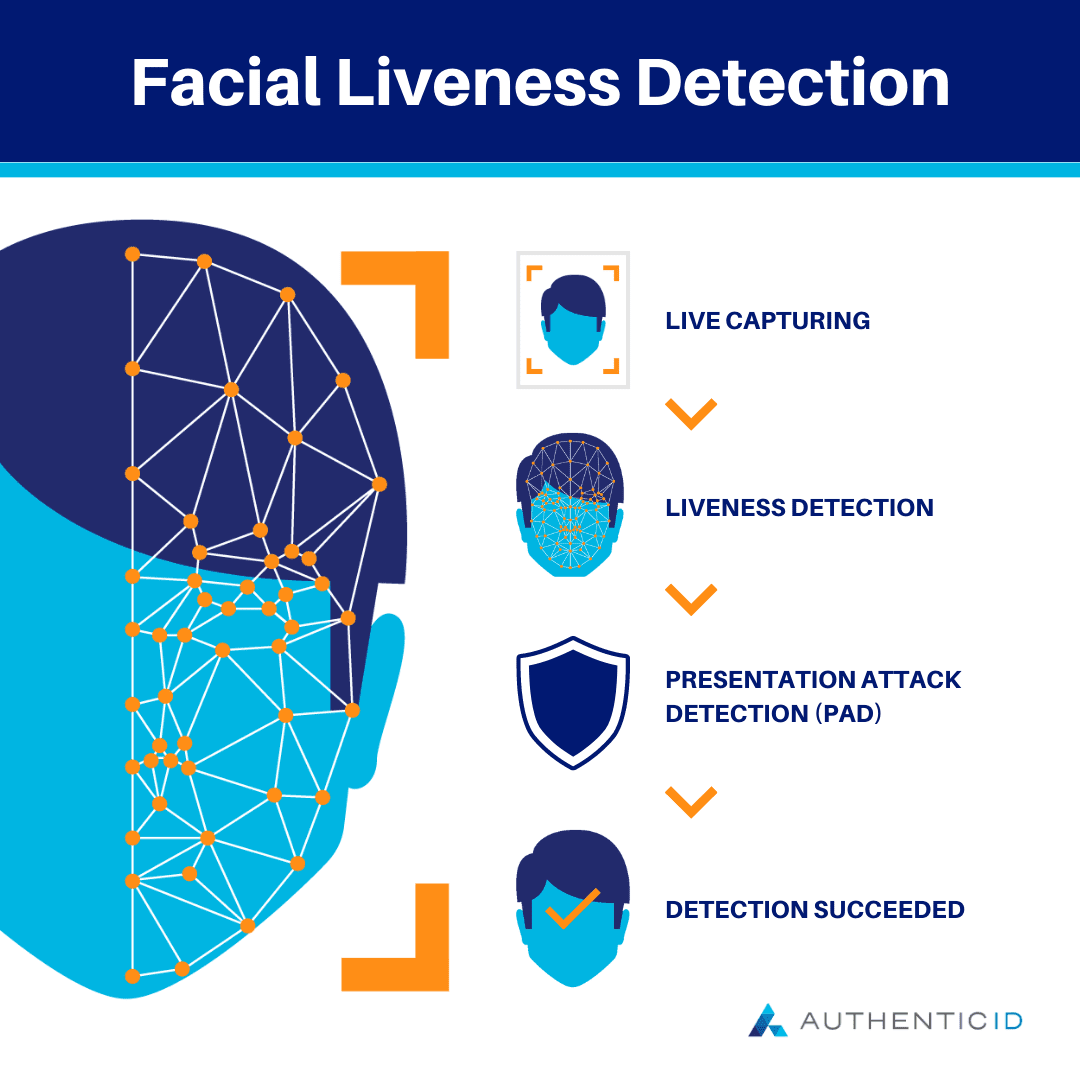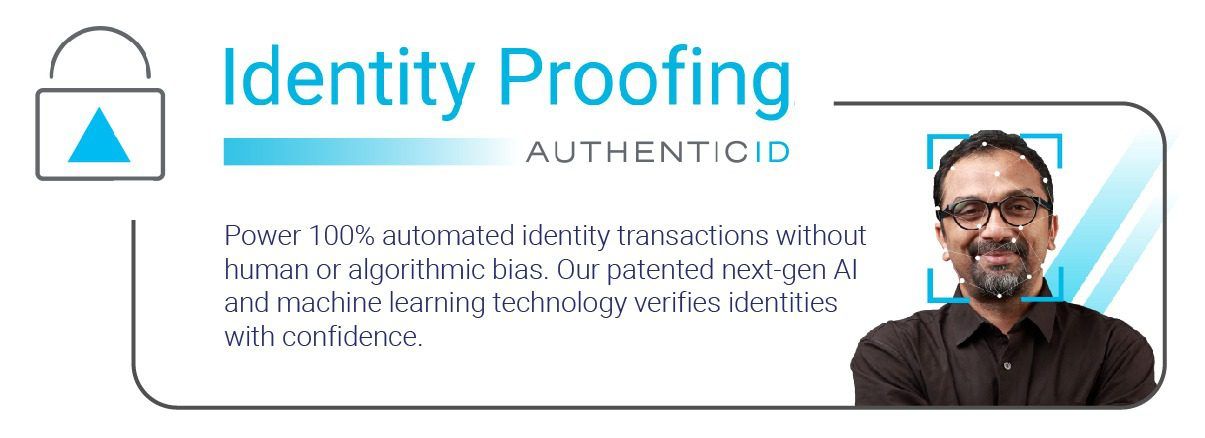Facial Liveness Detection is the use of a computer vision technology to detect fake or non-real faces when using facial biometric technology/software for authentication. It is the technology’s ability to analyze and detect if it is an actual living person taking a photo or video of themselves in real time.
How Does Facial Liveness Detection work?
To ensure the genuine presence of a living user and not a spoof, Presentation Attack Detection (PAD) technologies will use algorithms to analyze data collected from biometric scanners to verify the source. PAD technologies can be used to detect a variety of different aspects, including but not limited to, face recognition, voice recognition, fingerprint, palm print, and iris analysis.
PAD technologies can use two types of face liveness detection: active and passive. Active Liveness detection requires users to complete certain “challenges” or tasks such as moving their heads side to side, blinking, smiling, nodding, etc. This may be time consuming and frustrating for certain users, prompting them to leave. On the other hand, Passive Liveness detection does not require users to complete any tasks while the technology runs the necessary tests; as a result, Passive Liveness detection provides more convenience to users and lowers the drop-out/abandon rate.

What Are the Benefits of Using Facial Liveness Detection?
It ensures that not only is this person the right person, but also that he or she is a real person. The technology also helps prevent fraudsters or scammers from spoofing the system by using synthetic IDs, wearing synthetic masks, holding up printed images, replaying videos, or using deep fakes.
The technology helps fight against identity theft. According to a Statista report on the 2021 identity theft complaints within the United States, there were 395,948 complaints filed due to government document/benefits fraud. Following closely behind, there were 389,737 complaints filed due to credit card fraud. By using Facial Liveness Detection technology, these large numbers can be significantly reduced.
Facial Liveness Detection is also more secure than other security protocols such as knowledge based questions, date of birth, email, address, etc. These are all data points that are easy to procure, especially considering how much of people’s data exists on the Internet. With facial liveness detection, all a user needs is their face and the technology can authenticate the user from anywhere around the world, at any time necessary, at a quick speed, and with precise accuracy.
Another benefit is that the user experience is familiar, easy, and convenient. The user is most likely accustomed to taking a selfie or video with their mobile device. The only work they have to do is follow the instructions and within a few seconds/minutes, they will be authenticated.
This security feature mitigates the vulnerabilities of biometric authentication.
What Are the Use Cases and Relevant Industries for Liveness Detection?
Financial services industry is using this technology to their benefit. In the past, a customer would have to supply the banker with multiple different paper documentation, personal information, and identification. Now, bankers can use a digital form of verification to authenticate the customer’s identity.
The healthcare industry is also implementing this technology. Instead of having to fill out multiple paper forms or at kiosks while waiting for the doctor, the patient can now simply scan their face and see all their personal information. This also helps ensure that viruses don’t spread since there is no need to touch anything.
The telecommunications industry is also benefiting from the technology. In the past, there were significant problems with scammers providing false information and identifications to illegally purchase devices. By implementing this technology, they were able to reduce the fraudulent activities and grow their revenue and profits.
This computer vision technology can also be applied but not limited to: fraud detection/prevention, onboarding workflows, payment authorizations, customer registrations, check in, and check out.
